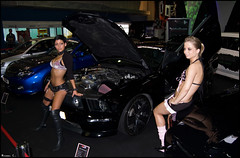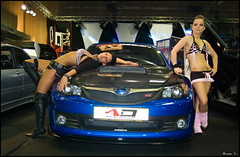


The most powerful gasoline engine in the Audi A5 Cabriolet is the 3.2-liter FSI. It operates with the innovative Audi valvelift system, which varies the lift of the intake valves in two stages. As a result, the gas exchange improves and the throttle can be left open more often, minimizing throttling losses – which in turn boosts the torque and the power output while reducing fuel consumption. The V6 delivers up to 195 kW (265 hp) as well as 330 Nm (243.4 lb-ft) between 3,000 and 5,000 rpm. With front-wheel drive and multitronic it accelerates the A5 Cabriolet in 6.9 seconds to 100 km/h (62.14 mph) – and up to a top speed of 246 km/h (152.86 mph). Its average fuel efficiency is an impressive 8.6 liters/100 km (27.35 US mpg). An optional alternative is quattro all-wheel drive, combined with the new seven-speed S tronic.The 2.0 TFSI likewise attests to Audi’s leadership position in engine design. This four-cylinder engine also uses the Audi valvelift system – but here it acts on the exhaust valves, with similar advantages as in the V6. Audi sells the two-liter turbo in two versions. In the entry-level version, which comes with front-wheel drive and multitronic, it delivers up to 132 kW (180 hp) and 320 Nm (236.02 lb-ft) from 1,500 to 3,900 rpm. This version completes the standard sprint in 8.9 seconds and has a top speed of 219 km/h (136.08 mph). Average fuel efficiency is an excellent 7.4 liters per 100 km (31.79 US mpg).The more powerful version of the 2.0 TFSI delivers 155 kW (211 hp) as well as 350 Nm (258.15 lb-ft) between 1,500 and 4,200 rpm. It is available with three powertrain versions: with the quattro drive package and the seven-speed S tronic, and with front-wheel drive and either multitronic or manual transmission. In the latter version the A5 Cabriolet reaches 100 km/h (62.14 mph) in 7.5 seconds and has a top speed of 241 km/h (149.75 mph). Its average fuel efficiency is an impressive 6.8 liters per 100 km (34.59 US mpg).The two V6 TDIs also set the standards in their class. With their enormous torque and consistent running smoothness they represent the leading-edge sportiness of Audi TDI technology. The three-liter engine generates 176 kW (240 hp) and applies 500 Nm (368.78 lb-ft) of torque to the crankshaft between 1,500 and 3,000 rpm. The sprint from zero to 100 km/h (62.14 mph) takes 6.4 seconds. Top speed is 247 km/h (153.48 mph). This top-of-the-line diesel, which powers all four wheels via the seven-speed S tronic, is content with an impressive average of 6.8 liters/100 km (34.59 US mpg).The second TDI in the program is even thriftier. The 2.7-liter powerplant with 140 kW (190 hp) and 400 Nm (295.02 lb-ft) between 1,400 and 3,500 rpm consumes a mere 6.3 liters/100 km (37.34 US mpg)*. The smaller V6 diesel comes with front-wheel drive and manual transmission. It goes from zero to 100 km/h (62.14 mph) in 8.6 seconds; 230 km/h (142.92 mph) is its top speed (preliminary values



































